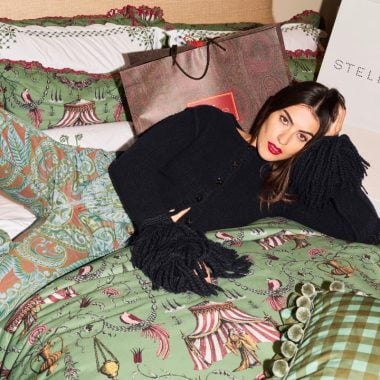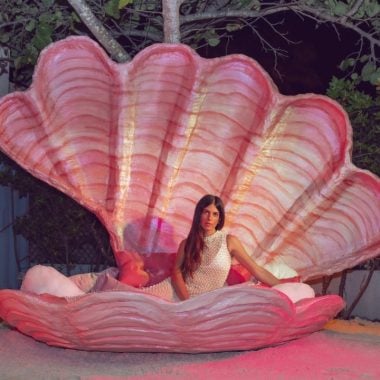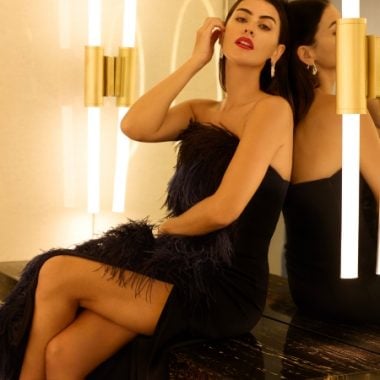By Kate Dwyer
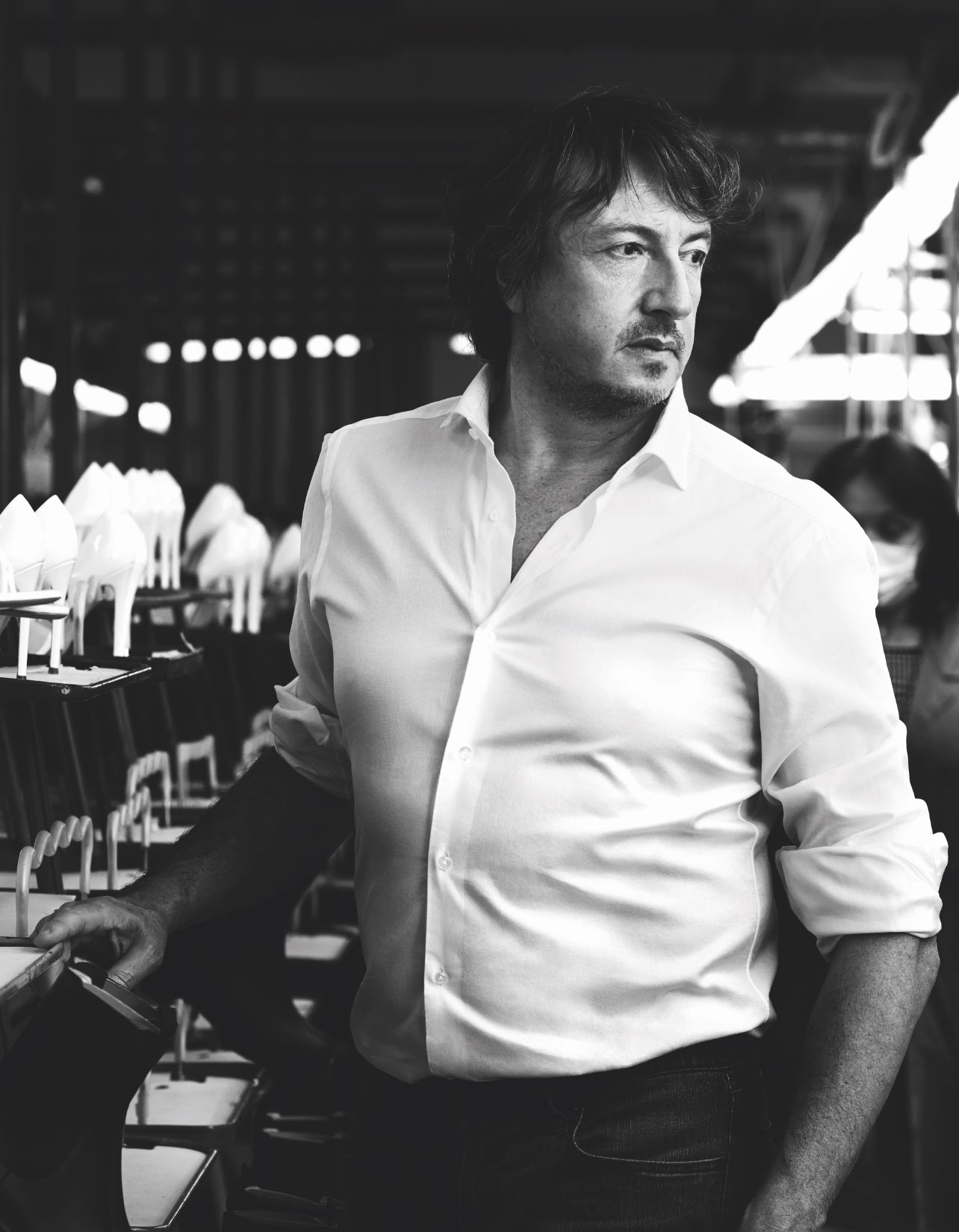
Gianvito Rossi, photographed by Gianluca Fontana, in his San Mauro Pascoli, Italy workshop.
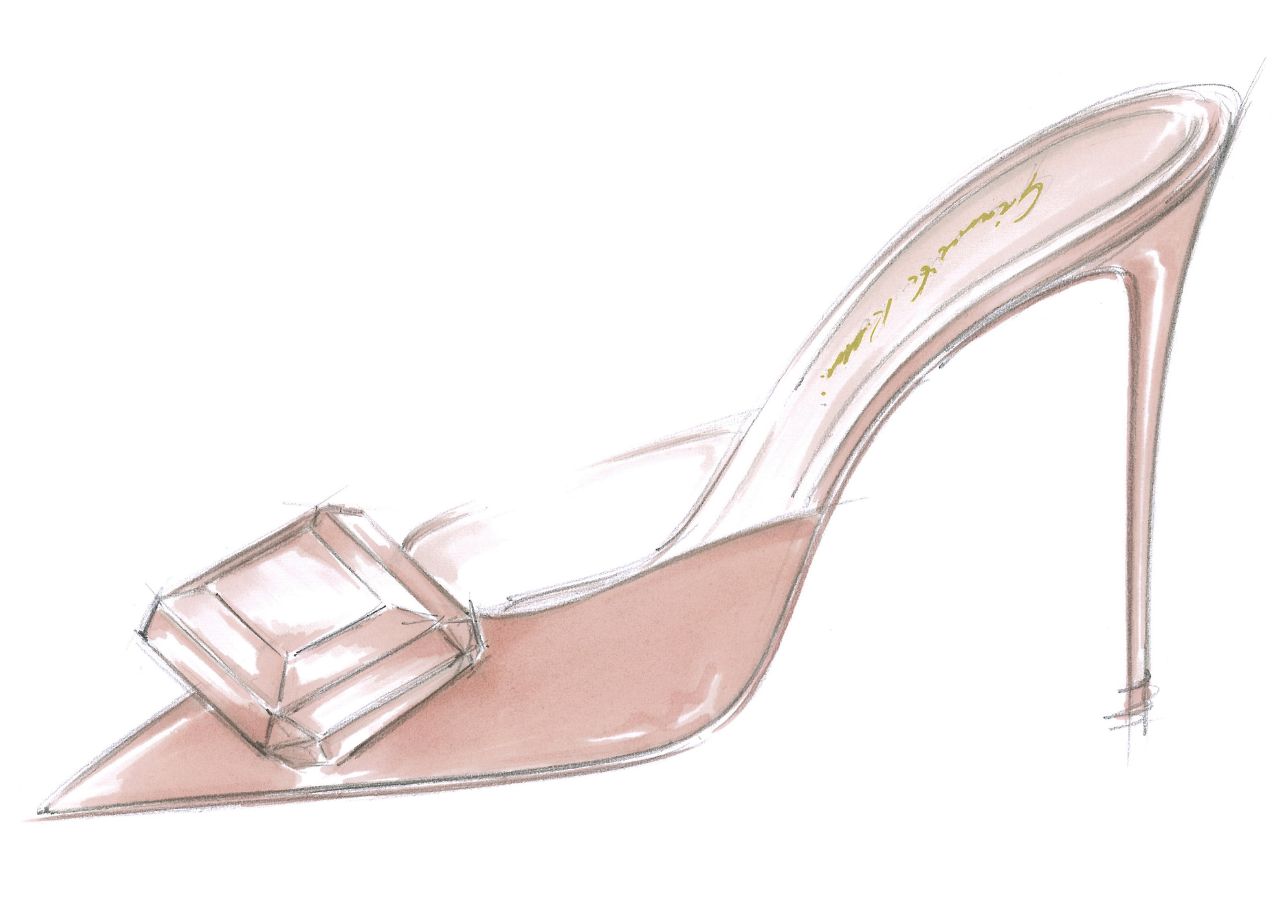
A sketch by Rossi of the new Jaipur mule.
“There’s this incredible variety of color, shapes,” says Gianvito Rossi, who’s speaking to me from his brand’s factory in San Mauro Pascoli, Italy. “They have a constant movement.” The luxury footwear designer is referring to works of Italian Futurist art, but one might describe his line of jewel tone heels, mules, and flats the same way. One of Rossi’s favorite sculptures is Umberto Boccioni’s Unique Forms of Continuity in Space, because the dreamlike cast captures the subject’s stride with “incredible attention,” he says. “You really see the hand of the artist.”
At Rossi’s factory, many hands touch each shoe. While his father, Sergio Rossi, made his name with stilettos that require 120 steps and 14 hours to produce, a Gianvito heel clocks in at roughly 60 steps from start to finish. “There are so many single activities” in the production process “that you really need to be very specialized,” he says. His 150-person operation is staffed with artisans who trained through years of practice.
The elder Rossi “was a real master” at engineering shoes for comfort and stability, his son says, and imparted an appreciation for the mechanics of design. “When you design a shoe, when you design something, you need to know how things are working.” Otherwise, “it’s just a sketch.” Understanding the relationship between form and function is key: “if you know how things are made, the result of your design will match the expectation.” For example, closed toe heeled mules should be cut slightly higher on the sides to contain the foot and avoid slippage. Soles are curved for optimal balance. “We want to keep the fit,” he says, regardless of how the shoe looks on a superficial level.
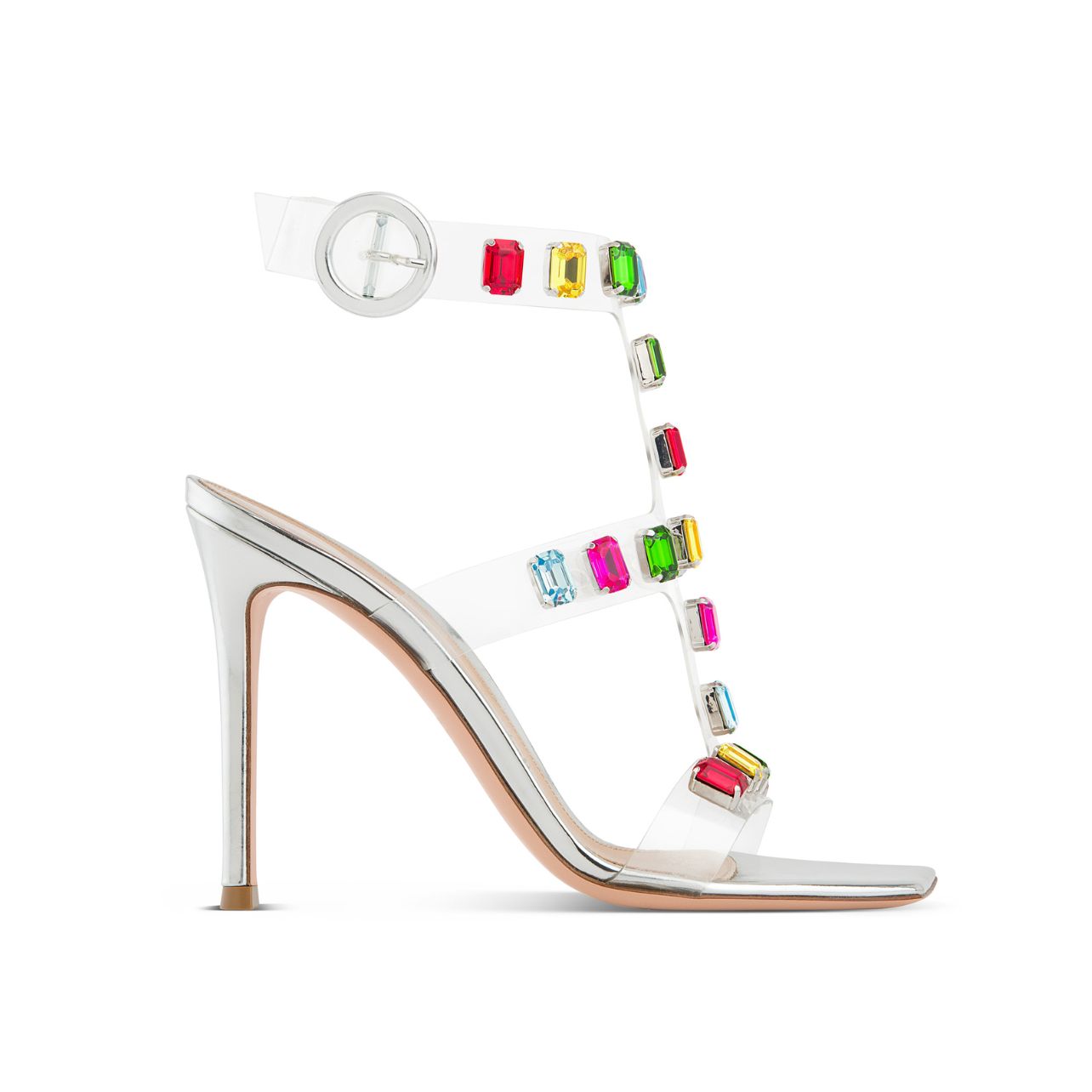
Gianvito Rossi
Crystal Crash sandal
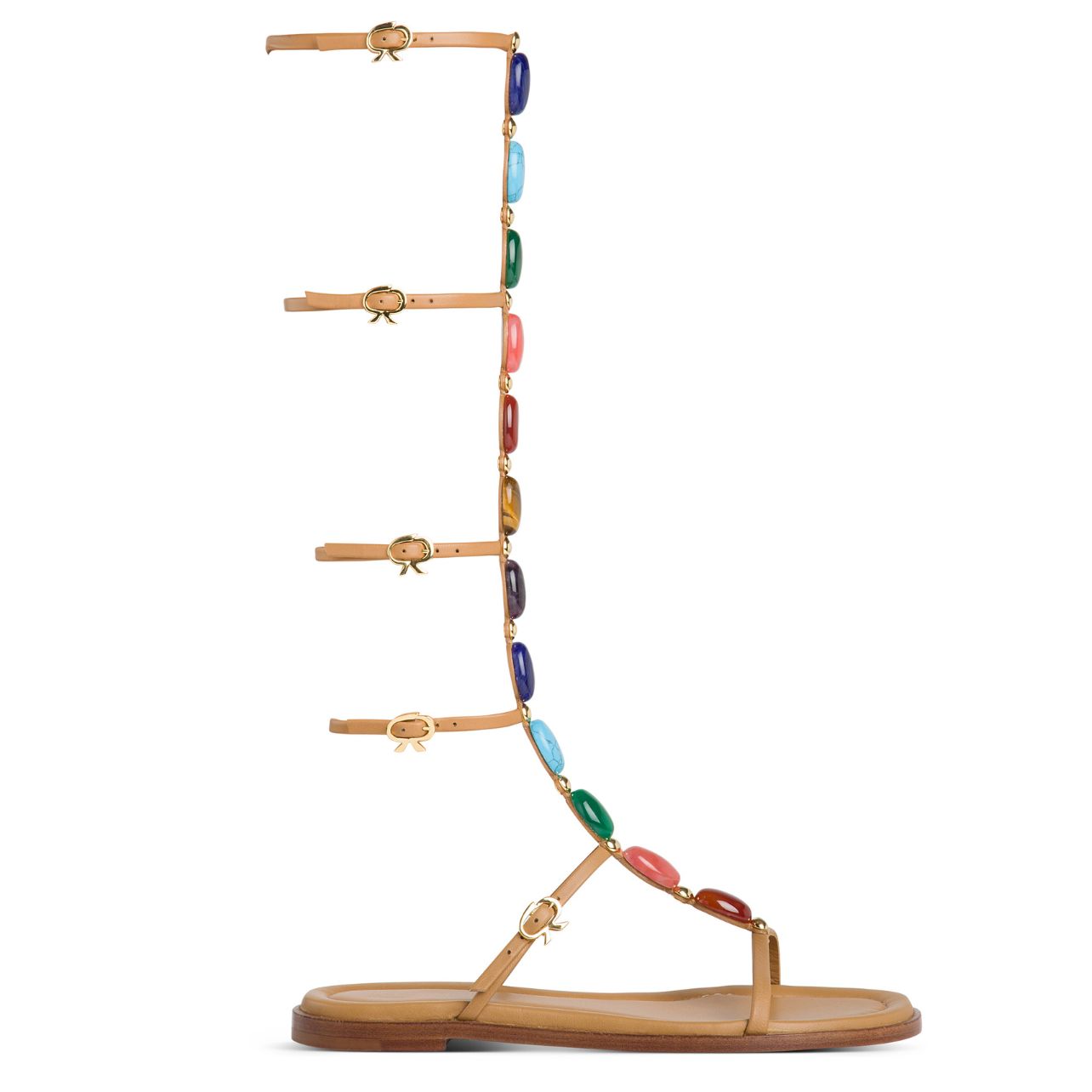
Gianvito Rossi
Shanti gladiator sandal
From an aesthetic perspective, Rossi says, his designs must be “simple, original, elegant, and feminine,” but the ultimate objective “is to create something that might become a classic.” His initial brainstorming stages combine two approaches: an “evolutive” approach, wherein he elaborates upon previous collections, shapes, and materials, and an “innovative” approach, where he toys with entirely new concepts. Last fall, Rossi unveiled the Jaipur collection, which features enormous gemstones on the toes of his signature heels. The shoes look like they’ve always existed, but in fact, Rossi designed the stones from scratch.
Rossi’s father taught him to “never be satisfied by what you do,” he says, “because there’s always a way to do the same thing in a better way. It’s a continuous evolution, and you’re always pursuing a better result.” That’s a lesson he plans to pass down to his 25-year-old daughter, Sofia, who now creates social media content for the brand.
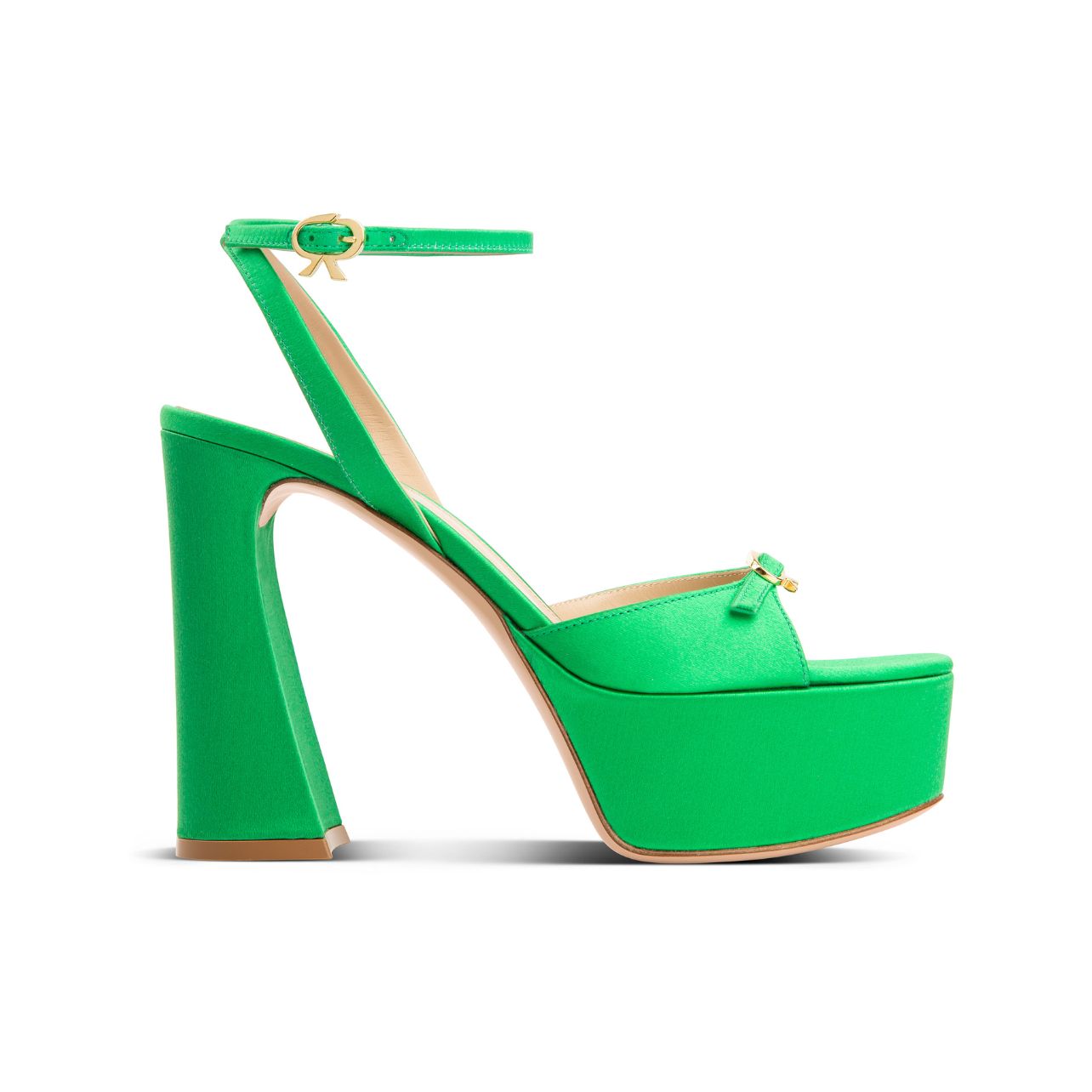
Gianvito Rossi
Maddy platform
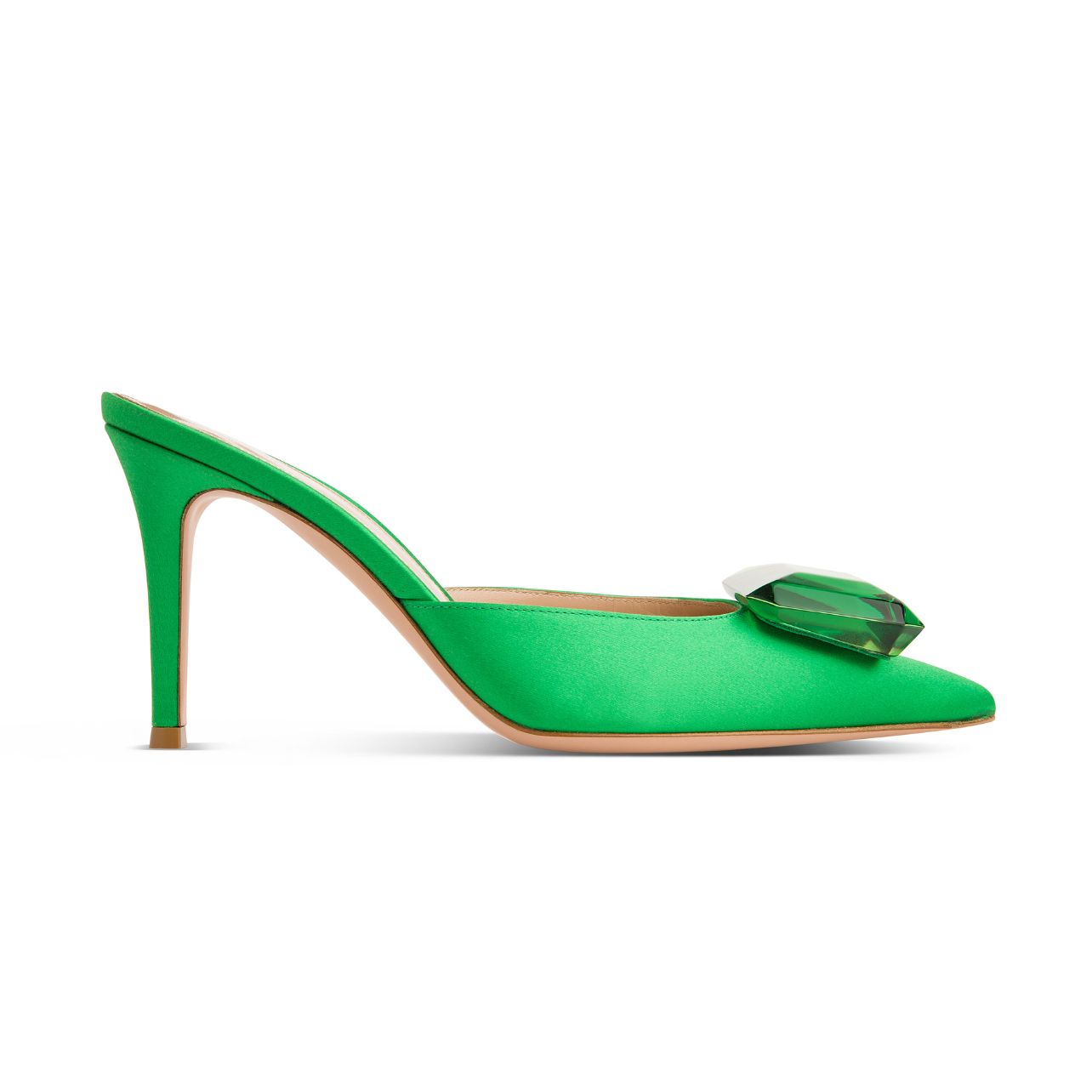
Gianvito Rossi
Jaipur satin mule
Before his daughter joined the digital team, she spent time stitching in the factory, as did Rossi in his younger days. “She knows everything about the shoes,” he says. Interestingly, the designer sees a renewed interest in high-end artisanal work among his daughter’s age group. “When you really build something and are part of it, you’re making something real,” he says. “It’s quite engaging.” Attitudes towards high heels have changed since 2020, when the heel-buying crowd locked down and switched to sneakers. “There was absolutely no reason to buy high-heeled shoes,” Rossi says, and sales reflected as much. But when restrictions loosened, he adds, “we immediately saw a comeback of the heels.”
Openness is a theme of the Spring/Summer 23 collection, which features shoes inspired by nightlife across the globe. Satin platforms represent Paris, while natural stones and gladiator flats evoke Coachella. It’s an exercise in vicarious revelry. “I love imagining living in a different place, living what the spirit is,” says Rossi. “We are one, but we can be multiple. I don’t want to be exactly the same me everywhere.” Because, after all, “a shoe is made to move.”

